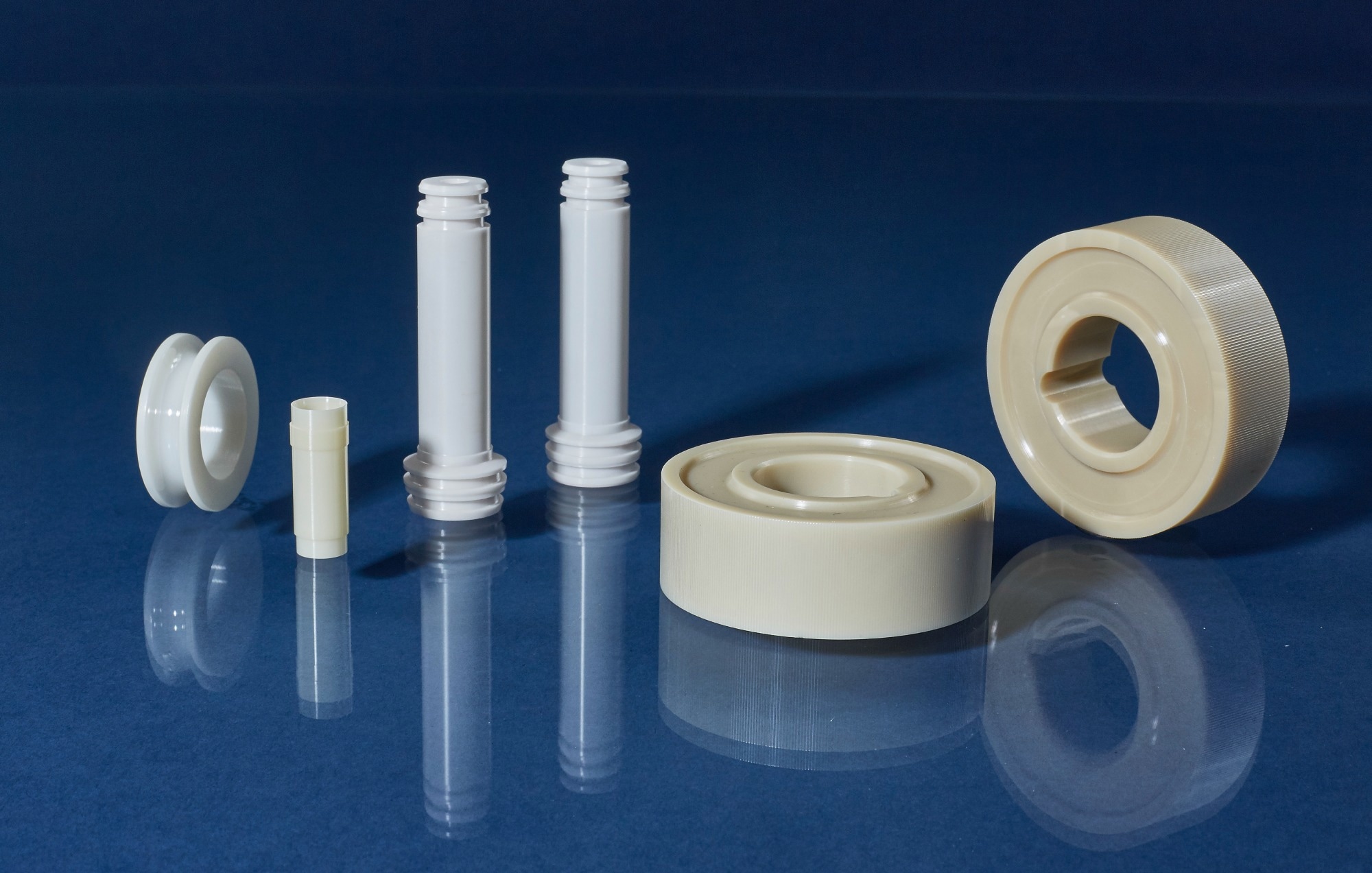Tetragonal zirconia polycrystal (TZP) is commonly stabilized with 3% to 5% Yttria and has the finest grain size. Since they are almost entirely tetragonal, these zirconia grades have the maximum toughness at room temperature. However, between 200 and 500 °C, their toughness significantly decreases due to dimensional changes caused by irreversible crystallization.

Image Credit: Insaco Inc.
Zirconia is well-known among ceramics for being hard and resistant to fracture at room temperature. The excellent surface finishes and the ability to maintain a sharp edge are also made possible by the fine (sub-micron) grain size of the material.
Zirconia exhibits structural changes that could restrict its usage to possibly only 500 °C, despite the fact that it retains several qualities, including corrosion resistance, at extremely high temperatures. It also becomes electrically conductive while this temperature is achieved.
To facilitate transformation toughening, zirconia is frequently combined with either MgO, CaO, or Yttria as a stabilizer. Due to this, a partially cubic crystal structure is produced during initial firing as opposed to a fully tetragonal one, and it maintains its metastability during cooling.
Tetragonal precipitates experience a stress-induced phase change along the leading edge of the fracture upon contact.
This process causes the structure to expand while absorbing a significant amount of energy, which accounts for this material’s remarkable toughness. High temperatures also cause a significant amount of reforming, which harms strength and causes a 3–7% dimensional expansion.
By adding the aforementioned blends, the amount of tetragonal can be managed to strike a balance between toughness and strength loss.
Cubic zirconia
This single crystal optically clear ZrO2 form has a very good thermal shock resistance but a relatively low fracture toughness and strength.
Zirconia PSZ
Cream-colored mixtures with around 10% MgO are known as partly stabilized zirconia (PSZ) and have a high degree of toughness. They also maintain this quality at high temperatures. They have a larger grain structure and are slightly less expensive.
Source: INSACO Inc.-Machining of Hard Materials
| Property |
Value |
| General |
| Chemical Formula |
ZrO2-Y2O3 |
| Mechanical |
| Density |
6.04 gm/cc |
| Hardness |
1300-1600 Knoop |
| Modulus Of Elasticity |
29 - 30 x 106 psi |
| Flexural Strength |
130 - 150 kpsi |
| Compressive Strength |
360 - 700 kpsi |
| Poissons Ratio |
0.23 - 0.32 |
| Fracture Toughness |
7 - 13 MPa m½ |
| Electrical |
| Dielectric Strength |
50 ac V/mil |
| Dielectric Constant |
26.0 (@ 1 MHz) |
| Volume Resistivity |
> 1013 ohm-cm |
| Thermal |
| Coefficient Of Thermal Expansion |
5.7 - 11 x 10-6/°C |
| Thermal Conductivity |
1.8 - 2.9 W/mK |
| Shock Resistance |
350 °C Diff. |
| Maximum Working Temperature |
2400 °C |
All properties are at room temperature unless otherwise noted.
Engineering data are representative and are not intended as absolute nor warrantable. The manufacturer’s data is blended from multiple sources and therefore illustrates the marketplace.
Zirconia vs Macor - Field Test Comparison

This information has been sourced, reviewed and adapted from materials provided by INSACO Inc. - Machining of Hard Materials.
For more information on this source, please visit INSACO Inc. - Machining of Hard Materials.